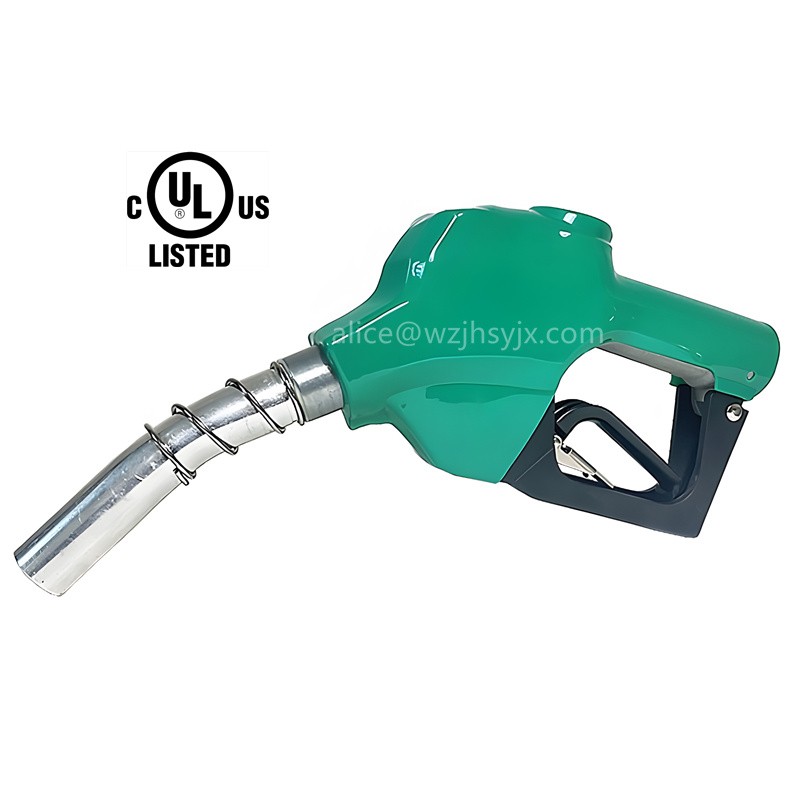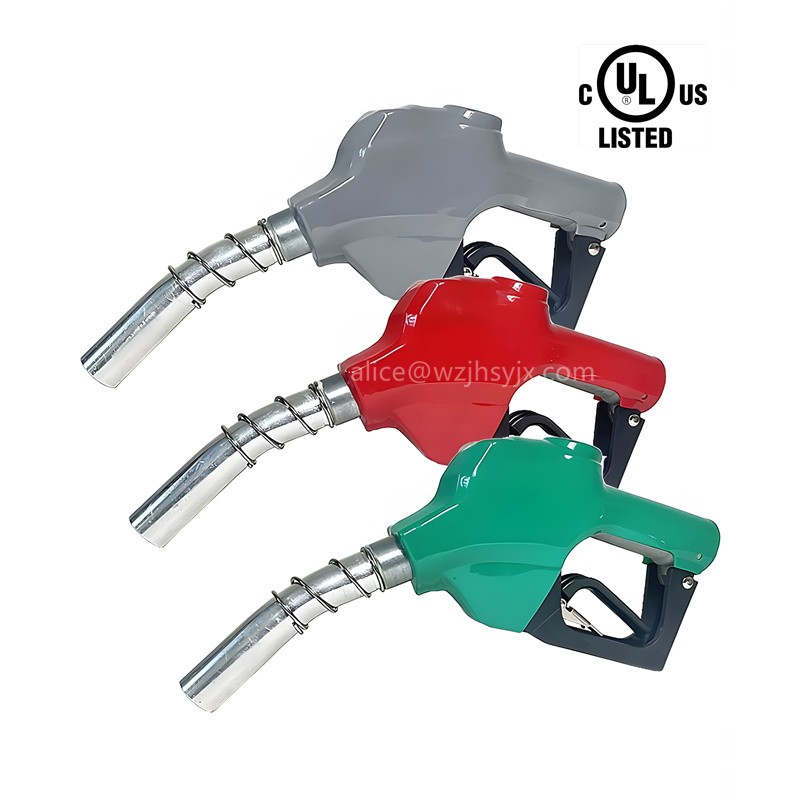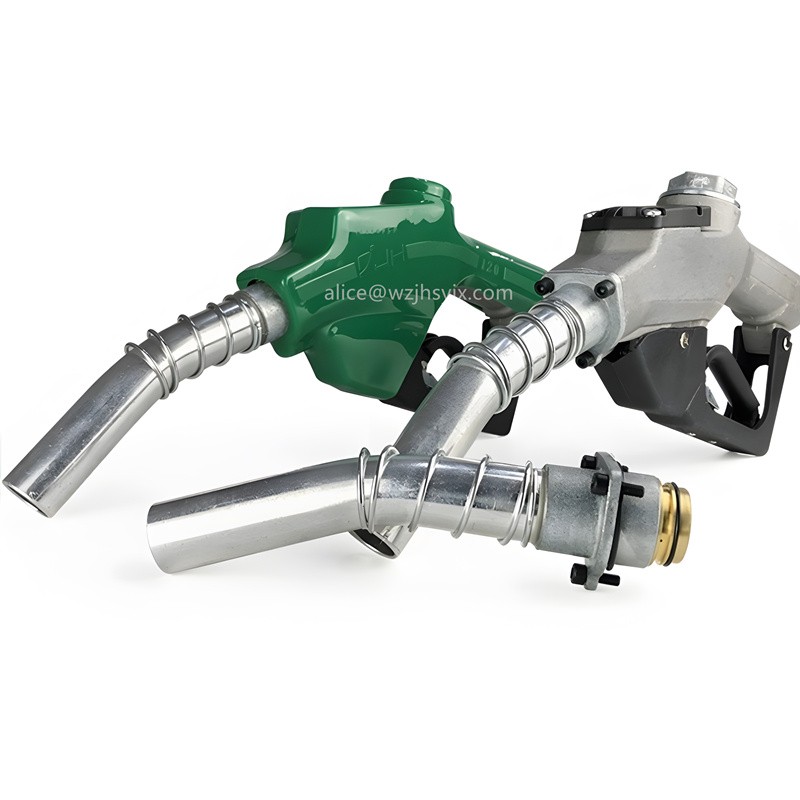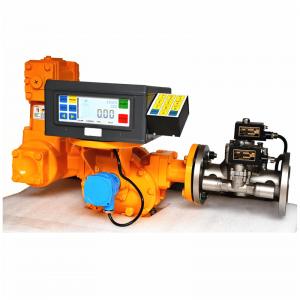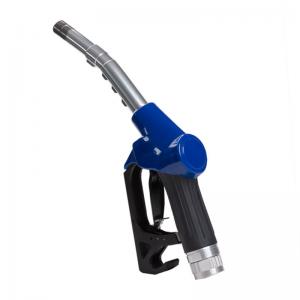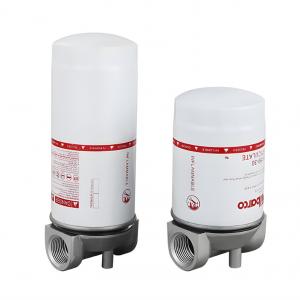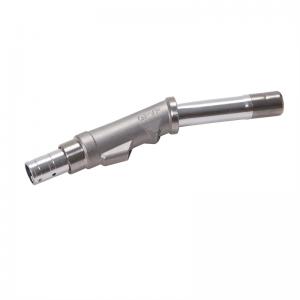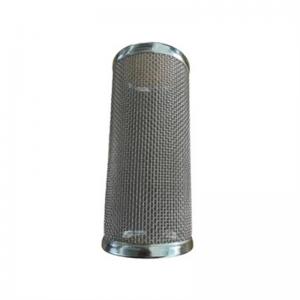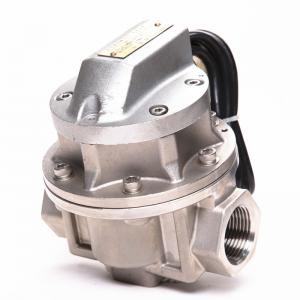Description
OPW 7HB Automatic Fuel nozzles BIG SPOUT UL
If you operate a full-service truckstop, refuel your own fleet or manage a card-lock refueling location, the low-cost, long-life and durability of the OPW 7H® high-flow nozzle can help increase your productivity, sales and profits.
7HB and 7 nozzle difference is, B series is non pressure style.
Performance Profile
The self-sealing series of fueling nozzles produced by our company are suitable for filling operations of kerosene, gasoline, diesel and other light oils. The self-sealing device fused into the nozzle body design can ensure that the nozzle is automatically closed when the container is filled, preventing the medium from overflowing. The positioning piece installed in the butt part can realize the flow rate to be distributed in 2-3 grades. The connection thread of the oil inlet can be processed into various standards according to the needs, which is convenient for customers to choose and use. Aluminum alloy nozzle body has good electrical conductivity to eliminate static electricity in a timely and safe manner.
Main technical parameters
Maximum allowable pressure: 0.35MPa
Applicable ambient temperature: 25℃-55℃
|
model number |
Inside diameter of oil outlet |
oil outlet external diameter (including thickness of the wall) |
Inlet connection sizes |
Flow range |
Self-sealing properties 1S shut-off |
electrical conductivity |
Non pressure |
|
JH-ZFQ1-50 (11A small spout ) |
16mm |
20mm |
3/4″ BSP.F/NPT |
10-50LPM |
8~10L/min |
≤4Ω |
NO |
|
JH-ZFQ1-50B (11B small spout) |
16mm |
20mm |
10-50LPM |
8~10L/min |
≤4Ω |
YES |
|
|
JH-ZFQ1-60 (11A big spout ) |
19mm |
24mm |
10-60LPM |
8~10L/min |
≤4Ω |
NO |
|
|
JH-ZFQ1-60B (11B big spout) |
19mm |
24mm |
10-60LPM |
8~10L/min |
≤4Ω |
YES |
|
|
JH-ZFQ1-120 |
26mm |
30mm |
1″ BSP.F/NPT |
10-120LPM |
17~20L/min |
≤4Ω |
NO |
|
JH-ZFQ1-120B |
26mm |
30mm |
10-120LPM |
17~20L/min |
≤4Ω |
YES |
Working Principle
When refueling, the switch handle is lifted, the top lever opens the main valve, and the pressure solution flows through the main valve into the lower chamber of the main valve. Under the action of the pressure oil, the secondary valve is opened so that the solution flows into the container through the outlet pipe. During the solution flow, the air in the cavity behind the seat of the secondary valve is taken away. When the receiver container is not filled with oil, the air taken away is compensated through the air tube and air nozzle. The oil nozzle is not self-sealing. When the receiver container is filled with oil, the air hole is blocked by the oil, the air can not be compensated, the air in the cavity is taken away to form a negative pressure, at this time the diaphragm upward deformation, the diaphragm shaft moves upward with the diaphragm. The steel ball slides to the center and the shaft falls down, losing the role of the fixed pivot point, and the main valve closes automatically under the action of the spring. Self-sealing effect.
After the nozzle is self-sealed, the self-sealing lever and the self-control membrane are reset by their respective spring forces, and the switch handle is then reset.
Structural description
JH-ZFQ1 series refilling nozzles have two main structure types: ordinary self-sealing oil nozzle: JH-ZFQ1-50/60/120; pressureless self-sealing oil nozzle: JH-ZFQ1-50B/60B/120B; the main difference between the two structures of refilling nozzles: ordinary membrane cover and pressureless self-sealing membrane cover; function difference: pressureless self-sealing oil nozzle can only be opened under pressure, and can be closed automatically under pressure, ordinary self-sealing oil nozzle, does not have this function. The ordinary self-sealing oil nozzle does not have this function.
Installation and Commissioning
a) unpacking and inspection
Self-sealing gasoline nozzle is packed in two layers, customers should carefully check whether the product has the inspection certificate, manual and other accessories after opening the inner package, and check whether the indicated specifications, models, threads and other parameters are in line with the customer's purchasing requirements, such as the discovery of errors or transportation damage, etc. Please contact our factory immediately.
b) mounting
Before installing, manually switch the gas nozzle on and off 2-3 times to check if the action mechanism is normal.
When connecting, first use the tool to fix the pipeline connector and then use both hands to trigger the nozzle body to tighten, after tightening should be checked under the nominal pressure of the connection for media leakage.
c) adjust components during testing
Insert the outlet pipe of the fueling nozzle into the mouth of the dissolver, and its insertion depth should not be less than 2/3 of the total length of the fuel outlet pipe, open the fueling nozzle after starting the fuel dispenser, and let it complete the self-sealing action process no less than 2 times in each gear (starting from a small flow rate), and no liquid overflow from the mouth of the container after the fueling nozzle has self-sealed can be regarded as the normal performance of the product, and the fueling nozzle can be put into normal use. If initially occurring when the nozzle is not self-sealing or self-sealing is slow, the air hole located at the front end of the oil outlet tube can be blocked with a finger, and the nozzle can be opened to let it complete 5-8 self-sealing actions, and the self-sealing system of the nozzle can be returned to normal.
Caveat
1、 The series of gasoline nozzles produced by our company can not be used for filling operations of other types of media except for light oils. Such as: heavy oil, acid, alkali and other properties of the liquid;
2、 Fueling nozzle inlet threads can only be connected with the same threaded pipe connector, if the thread standard is different, it will not be able to achieve sealing, and it is very easy to damage the threads on both sides or even cause the nozzle body to rupture.
3、 Tapered body threads are sealed by the threads, and an appropriate amount of sealing packing is required on the fitting threads during installation. Flat body threads are sealed by the flat part, and O-ring is installed at the root of the joint threads, so there is no need to add packing on the threads during installation.
4、 When connecting the nozzle body to the connector, the tightening torque should be moderate and it is forbidden to use other tools to screw the nozzle in order to prevent damage to the nozzle body.
5、 When the outlet tube of the refueling nozzle is inserted into a container for filling operations, it is prohibited to apply pressure to the nozzle body to avoid danger due to damage to the nozzle.
6、 The customer can refer to the troubleshooting table to deal with the faulty Fuel nozzle at the customer's place. The repaired fuel nozzle needs to be strictly tested before putting it into use, the factory does not favor customers to disassemble and repair by themselves, the products within the effective use period will not belong to the factory's gratuitous maintenance once disassembled by themselves in the customer's place.
7、 The sealing of the combination of the gasoline nozzle and the live joint is prohibited to use the raw material tape, the raw material tape winding thicker, the wire buckle is not too easy to bite through the raw material tape, so that the nozzle body and the live joint of the conductive contact area is reduced, which affects the gasoline nozzle and the hose between the good electrical conductivity, but also prone to produce leakage.


